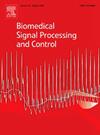PulseEmoNet: Pulse emotion network for speech emotion recognition
IF 4.9
2区 医学
Q1 ENGINEERING, BIOMEDICAL
引用次数: 0
Abstract
In recent years, Speech Emotion Recognition (SER) has garnered significant attention due to its potential applications in human–computer interaction, healthcare, and affective computing. However, existing approaches often face challenges in handling the complex, multimodal nature of speech data and the variability in emotional expressions across different contexts. In this paper, we propose PulseEmoNet, a novel deep learning-based framework designed to enhance the robustness of SER systems by integrating pulse signal information with acoustic features. The key innovation of our approach lies in the development of a PulseEmoNet that effectively captures the temporal and physiological correlates of emotional states from speech signals. Experimental results on multiple benchmark datasets demonstrate the superiority of PulseEmoNet over existing models. On EMODB, SAVEE, and CASIA, PulseEmoNet achieved accuracies of 91.11 %, 78.75 %, and 93.08 %, respectively, outperforming previous methods like 3DRNN + Attention and GM-TCN. Additionally, it achieved 88.70 % on BodEMODB, 61.40 % on IEMOCAP, and 95.98 % on ESD. These results highlight the effectiveness of PulseEmoNet in diverse emotional recognition tasks, providing a promising solution for real-time, cross-domain SER applications.
求助全文
约1分钟内获得全文
求助全文
来源期刊

Biomedical Signal Processing and Control
工程技术-工程:生物医学
CiteScore
9.80
自引率
13.70%
发文量
822
审稿时长
4 months
期刊介绍:
Biomedical Signal Processing and Control aims to provide a cross-disciplinary international forum for the interchange of information on research in the measurement and analysis of signals and images in clinical medicine and the biological sciences. Emphasis is placed on contributions dealing with the practical, applications-led research on the use of methods and devices in clinical diagnosis, patient monitoring and management.
Biomedical Signal Processing and Control reflects the main areas in which these methods are being used and developed at the interface of both engineering and clinical science. The scope of the journal is defined to include relevant review papers, technical notes, short communications and letters. Tutorial papers and special issues will also be published.
 求助内容:
求助内容: 应助结果提醒方式:
应助结果提醒方式:


